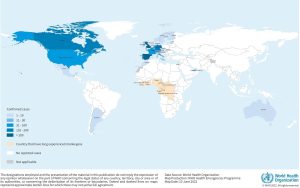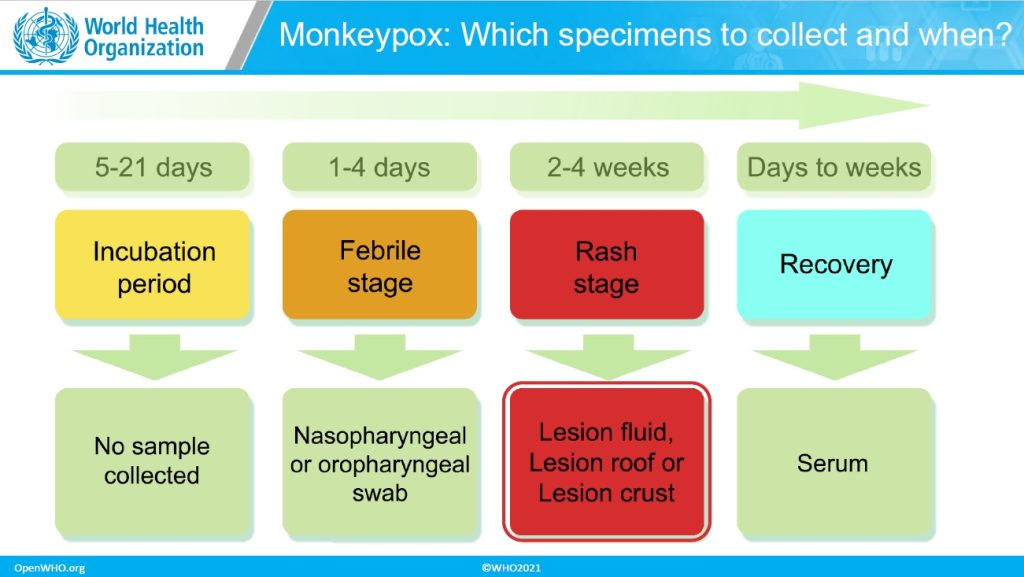Monkeypox: Causes, Symptoms and Prevention
Monkeypox virus
Monkeypox diseassse is classified as an infectious disease. The disease is transmitted from animals to humans and has the potential to be transmitted from an infected human to another human. The disease was first discovered in 1958 among monkeys kept for research. In 1970, the first human case of the monkey virus was observed in the Democratic Republic of the Congo. Outside of Africa, there have been numerous cases of monkey pox in the United States, Singapore, Britain, and the Occupied Palestinian Territories due to international travel.
Monkeypox is one of the diseases whose main origin remains unknown. Researchers believe that rodents are the most tolerant source of the disease. Of course, inhumane versions can carry the monkey virus and cause people to get the disease. Skin involvement in this disease intensifies over time. In some cases, due to the severity of the skin lesions, it can destroy part of the skin. As the disease progresses, the virus spreads to the brain and spinal cord, causing inflammation in this part of the body. It can even cause serious damage to the brain and spinal cord and cause the death of the patient. The period between infection and the onset of symptoms in this disease is often 1 to 2 weeks, and in some cases this period may last up to 3 weeks.
Monkeypox disease is different from chickenpox, which usually affects children in childhood or school. Chickenpox is caused by a different virus, and the severity and course of the disease and the consequences are quite different. Several smallpox viruses have been identified to date and named after the animals they infect, such as bovine smallpox, camel smallpox, monkey pox, and human smallpox, which was a very dangerous form of smallpox and was eradicated in a global effort in 1977.
The symptoms of this disease are similar to the symptoms of smallpox but occur milder. Symptoms include muscle aches, fatigue, fever, headache, etc. One of the most important differences between the symptoms of smallpox and this virus is the swelling of lymph nodes in Monkeypox.
Laboratory diagnosis of Monkeypox
Routine laboratory diagnosis of acute cases is performed using PCR test. If acute cases of monkeypox virus infection are observed, the use of laboratory diagnosis is a priority for specialists. The best example for identifying the virus genome is skin lesions. Other laboratory tests for the disease include virus antibody detection, virus antigen detection, culture, and virus isolation in cell culture. Although clinical diagnosis of smallpox virus is the first step in diagnosing the disease, laboratory confirmation is required for the final diagnosis. Depending on the course of the disease, there are different diagnostic samples.
1- Swelling of the oropharynx and nasopharynx in the febrile phase of the disease and before the onset of rash
2- An example of skin lesions after the appearance of rash or the same skin rash
3- Serum (for collection, the necessary coordination should be done with the reference laboratory of the drawer)
Dry shells are carefully removed with a sterile surgical razor and placed in a wrapper in a cryovial.
In general, this virus, like many other microbial agents, can be detected by a doctor’s examination and valid laboratory tests.
Methods of transmission of monkeypox virus
Monkeypox is an unknown virus, and research shows that this virus is mainly transmitted from animal to human. Close contact with an infected animal or causing wounds or scratches by the animal or the use of animal body tissue or exposure to infected animal fluids is one of the most important ways in which the virus can be transmitted to humans. There is a possibility of transmitting the disease if a healthy person is justified with the sick person and uses his equipment and clothes. Contact with a sick person greatly increases the risk of infection.
Intimate personal contact, such as kissing, has the same effect. Intrauterine transmission of the virus to the fetus may also occur in infected pregnant mothers. Fortunately, according to the International Health Association, which has been reviewed so far, respiratory transmission, although possible, requires prolonged contact. Other methods of human-to-human transmission include indirect contact through clothing or direct contact with secretions and feces.
Prevention of monkeypox virus
Monkeypox is a contagious virus that can be avoided by avoiding contact with animals and their carcasses. Also, avoid contact with the location and bed of the animal and related objects should not be forgotten. People with the virus should be isolated and use personal equipment such as gloves and masks when dealing with infected people. Be sure to observe personal hygiene and hand hygiene after dealing with animals or people infected with the monkey virus.
Disinfection of the hands is one of the most important ways to prevent the monkeypox virus. The use of protective clothing is essential for medical staff and people who come into contact with patients infected with the monkeypox virus.
Although the disease is self-limiting. But it can cause death in severe cases. Depending on the dose of infection and the patient’s condition, the health risks of the virus vary. The virus can be more vulnerable if there is an underlying disease, especially an immunodeficiency. Complications of this virus include blood infection, brain infection, corneal infection, pneumonia, etc. Because all orthopox viruses have a serological interaction, the use of antibody and antigen-based testing is not approved. The most definitive method in laboratory diagnosis is pcr test.
The virus, like many other viral diseases, has no definitive cure and can be prevented with antiviral drugs and vaccinations. The smallpox vaccine is a priority for experts to control the general transmission of the virus. Researchers believe that the vaccine can reduce the severity of the disease even after contact with the virus. The JYNNEOS vaccine is used in the United States to prevent monkeypox in people exposed to the virus.
Monkeypox has caused concern among people based on the horrors of news agencies. Of course, this is not a reason for lack of awareness and readiness. Proper and effective awareness of this disease is very important for the audience. For this purpose, the responsible agencies should take the necessary measures in this regard. In case of occurrence of even one case of this disease, it can be dealt with properly and in complete peace. The implementation of illustrated educational templates in public areas, including air, land and sea border guards, is essential to prevent the occurrence of this disease and how to deal with the monkeypox virus.
Considering all the symptoms of monkey virus that we mentioned in the previous sections, if you see any symptoms of this virus, go to medical centers immediately. Also, take care of your personal hygiene to prevent the transmission of the virus. The skin symptoms of this virus vary from person to person.
Standard sample packaging method
It is very important to follow all the principles and rules in the packaging of samples of this virus and one should be aware of all packaging standards. Use a standard three-layer system for packaging. To remove the sample, preferably wear two gloves on top of each other. Disinfect the area around the pipe with a 10% home bleach solution. Wrap the absorbent and shock absorber according to the volume of liquid around the tube containing the sample. Then put the tube inside the quality zipper and cap. Insert the zipper into the Falcon tube in the screw. Then remove the top glove from your hands without contacting the bottom glove.
Perform the disinfection process on the Falcon tube for the second time. To carry the Falcon tube, you can put it in a cold box. You can use an ice pack to secure the tube inside the box.
Referances:
- “Multi-country monkeypox outbreak: situation update”. www.who.int. World Health Organization. 4 June 2022. Archived from the original on 6 June 2022. Retrieved 7 June 2022.
- “Monkeypox”. World Health Organization. 19 May 2022. Retrieved 28 May 2022.
- “Signs and Symptoms Monkeypox”. CDC. 11 May 2015. Archived from the original on 15 October 2017. Retrieved 15 October 2017.
- “Infection Control: Hospital | Monkeypox | Poxvirus”. 22 May 2022. Archived from the original on 18 May 2022. Retrieved 24 May 2022.
- “Interim Clinical Guidance for the Treatment of Monkeypox | Monkeypox | Poxvirus | CDC”. www.cdc.gov. 26 May 2022
- Harris, Emily (27 May 2022). “What to Know About Monkeypox”. JAMA. doi:10.1001/jama.2022.9499. PMID 35622356. S2CID 249096570.





